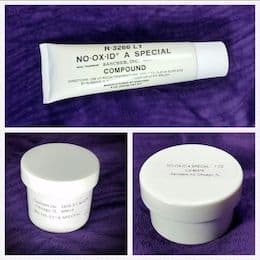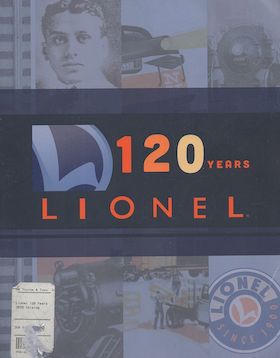
-----
Model railroading: Effect of oxidation of nickel silver on its conductivity
Q. I am a model railroader. I note that the conductivity of copper oxide has been described as about one-millionth of that of pure copper. Nickel silver is used for track. There is a large debate whether the oxide of nickel silver is a conductor. What is the corresponding drop of conductivity between nickel silver and nickel silver which has oxidized?
The answer is relevant because cleaning track of dirt is necessary but if the track is clean but only has a light layer of oxidation, is chemical or abrasive cleaning necessary to insure conductivity?
Retired - Bayside, Wisconsin, USA
2003
Q. I would love to see an answer to this question. I've looked on the internet and haven't found anything. Did you ever get information about the conductivity of nickel silver oxide? Thanks so much.
Paul Wilfonghobbyist - San Diego California
August 9, 2023
A. Hi. I personally don't think nickel silver has much to do with this subject. There is a lot of urban legend about what metal Lionel train tracks were made of and plated with, so I spent some time googling a bunch of sites to try to sort through what rung true and was substantiated vs. what sounded like Chinese Whispers, and I am fairly convinced that Lionel track of the conventional O-gauge and 027 was always made of tin plated steel, not of nickel-silver. For one thing, "magnatraction" would not work if the track wasn't steel.
I also read pros & cons of abrasive vs. chemical cleaning, and I believe that the thing to do is clean the track with mineral spirits
⇦ on
eBay
or
Amazon [affil link]
, then very lightly abrasively clean it to remove excessive oxidation, and then apply a very thin coating of no-ox-id. The idea being that if the no-ox-id works as reputed, far less frequent cleaning should be necessary, and with much less frequent need for abrasive cleaning you won't have to worry about abrading away the plating.
Luck & Regards,

Ted Mooney, P.E. RET
Striving to live Aloha
finishing.com - Pine Beach, New Jersey
Ted is available for instant help
or longer-term assistance.
![]() Thanks so much for posting on this!
Thanks so much for posting on this!
3-rail track from Lionel seems to be steel or plated steel, though their web-site doesn't make it obvious. Other 3-rail track vendors such as Bachmann sell steel and also nickel-silver track.
Mr. Zoeller and I were asking about track used in HO scale, not about Lionel track. Power comes from HO track using only two rails; this and the lighter weight makes electrical considerations regarding track and wheel conductivity a much more significant issue than it is in the larger scales and 3-rail.
HO track in the 40's was brass. Unfortunately brass track oxidizes easily, and conductivity of its oxidation is greatly reduced. In the 50's a shift to using nickel-silver for HO track began, and now pretty much only nickel-silver HO track is available.
Nickel-silver oxidizes less rapidly and its oxidation is conductive. So use of nickel-silver track (and loco wheels) has greatly improved the operation of HO locomotives since the good 'ol days.
But oxidized nickel-silver seems to be somewhat less conductive than the non-oxidized metal. Hence our curiosity about the drop of conductivity between nickel-silver and nickel-silver which has oxidized.
The scale model press has documented the superiority and characteristics of nickel-silver extensively over the years. For example, it's easy to find such articles using Model Railroader's on-line issue archive.
Sadly, based on not getting responses to our original question, it looks like it's possible no one has actually done a technical analysis of conductivity drop between nickel-silver and oxidized nickel-silver. It sure seems like a great materials-science under-graduate project topic at some university!
- San Diego
September 18, 2023
HO gauge trains & accessories on eBay (affil link)
A. Hi Paul, I know it's been over a year since you last posted, just wondered if you came to any conclusions to your question? I am a retired plater that worked in a copper alloy wire redraw mill in NJ. We purchased various Nickel Silver alloys to sell. Do you know that the major components to the alloy are Copper, Nickel, and Zinc? The exact proportions vary depending on what alloy is being used. CDA 74500 is a common alloy. C76400 is another.
One day when we were receiving a shipment of wire I was told by the driver that he had to make a delivery of Nickel Silver in Hillside, NJ next. I immediately thought of Atlas Model Railroad Company, since I didn't know of any other large users of wire in Hillside. Most likely make the track by rolling round wire in Turk's Head machines using shaped rolls.
As to the composition of the oxide that forms on this alloy, I can't really say. Is it something similar to the base material? Or is it mostly composed of copper?
To answer your question about the change in conductivity seen in clean vs oxidized Nickel Silver, you will need a very accurate ohm meter capable of measuring out to many decimal places. You will need to measure the resistance between the locomotive wheels and the track surface. Compare the readings when freshly cleaned track and wheels are used and then when oxidized track and wheels are used. You can repeat over time to see if changes occur and how severe they are. Try to keep temperature constant.
The usual way Electrical Conductivity for wire is reported is as "% IACS at 68 °F". For C74500 it is 9%, which means it conducts at 9% of pure copper.
Some values I looked up on a website: Conductivity of Copper = 59.6 x 10^6 Siemens/m. Nickel = 14.3 x 10^6 Siemens/m.
I don't remember how to convert between resistance readings (Ohms) and Conductivity (%IACS at 68 °F). Or between %IACS and S/m It has to do with the surface area of the contacts and the lengths.
But, seeing the changes in resistance between the same track and the same locomotive will come close to answering your question.

Jerry Smith
retired plater - Bloomingdale, New Jersey, USA
December 5, 2024
A. Thanks for the great exposition and excellent suggestion, Jerry! -- and always terrific to hear from you, I remember almost being locked into the Rock & Roll Hall of Fame building with you :-)
Readers: Resistance & conductance are reciprocals (R=1/C); and resistivity & conductivity are reciprocals.
Resistivity & conductivity are the inherent properties of the metal, whereas resistance & conductance are an overall measurement of the impact on current flow from one point to another and are proportional to the length from one point to the other, and inversely proportional to the cross sectional area. If you double the length of a wire you double its resistance; if you double the cross-sectional area of the wire you halve its resistance (R = ρL/A).
As for the oxidation film between the track and wheels. I think the oxides of nickel-silver, i.e., nickel oxide, copper oxide, and zinc oxide are essentially non-conductive, and thin and porous. but will grow with time -- so I personally doubt that the answer that is being sought has a quantitative answer :-(
Luck & Regards,

Ted Mooney, P.E. RET
Striving to live Aloha
finishing.com - Pine Beach, New Jersey
Ted is available for instant help
or longer-term assistance.
![]() Hi Ted! Those were good times, weren't they? The guard came up to us to let us know the building was closed. I think we may have been in the Buffalo Springfield section. The years have gone by. I need an updated photo!!
Hi Ted! Those were good times, weren't they? The guard came up to us to let us know the building was closed. I think we may have been in the Buffalo Springfield section. The years have gone by. I need an updated photo!!
Jerry
Retired Electroplater - Bloomingdale, NJ
December 6, 2024
Q, A, or Comment on THIS thread -or- Start a NEW Thread

